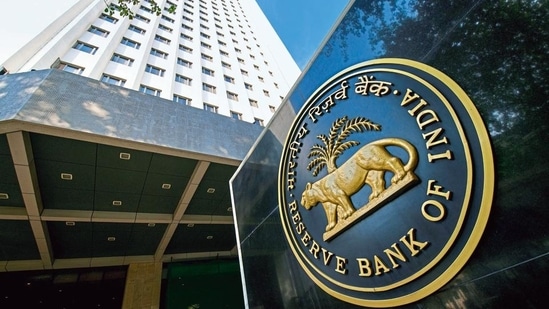Explained: How RBI is using technology to operationalise e-rupee? 10 points
The RBI in its 51-page concept note detailed various aspects including the technological measures to operationalise its electronic currency, its underlying digital infrastructure and details about the various technological options the central bank is exploring.
The Reserve bank of India (RBI) on Friday came up with a concept note detailing plan of introducing its own digital currency - the Central Bank Digital Currency (CBDC). In the 2022 Union budget, finance Minister Nirmala Sitharaman has announced the launch of e-rupee.

The RBI in its 51-page concept note detailed various aspects including the technological measures to operationalise its electronic currency, its underlying digital infrastructure and details about the various technological options the central bank is exploring.
1)RBI says the digital currency can be operated either by a distributed ledger - adopted in the blockchain mechanism, or a conventional centralised system or can even come up with a hybrid system.
Though in both the practice the data is stored over multiple physical locations but in the centralised system it is controlled by one authoritative central entity. In contrast, the distributed ledger system is usually managed jointly by multiple entities in a decentralised manner.
However, the concept note points, this consensus mechanism requires additional overhead, resulting in lower transactions than conventional systems.
2) Although RBI is planning to start the CBDC project on a pilot basis, it has mentioned in the white paper that the system should be built up such that it can be extended to large-scale deployments in the future without requiring to be redesigned or reworked.
3) Noting that out of 143.3 crore population, only 82.5 crore people have internet access, for financial inclusion it is necessary that the digital payment support offline capability.
The wallets must be capable of independently verifying the validity of any CBDC transaction without interacting with the server during the transactions.
4) As India already has a robust digital payment infrastructure like UPI, digital wallets like Paytm, Gpay, etc. the upcoming digital payment system must be compatible and interoperable with them.
Along with domestic interoperability, the RBI is looking for a system which can also engage in Cross-Border Payments.
ALSO READ: UPI payment crosses ₹11 lakh crore milestone in September
5) With such a system, the central bank is expecting that the CBDC platform will generate vast sets of data in real time. In the concept note, it stresses this data can be fruitfully utilised keeping in mind privacy concerns. It adds, the data can assist in evidence-based policymaking, can become a rich data source for service providers for financial product insights and may help curb non-compliance with existing rules and regulations.
6) The RBI is also looking to give a programmability feature in the digital currency. This means limiting the use of money for particular consumption. For example, agriculture credit by banks can be programmed to ensure that it is used only at input store outlets. Through this, the issue of diversion of funds can be checked.
7) RBI has emphasised that energy efficiency and environment friendliness should be paramount. For this, issuance and management of e-rupee should have much lesser energy consumption in contrast to more energy intensive processes normally associated with mining and distribution of private cryptocurrencies.
ALSO READ: Cryptocurrency is harmful for environment, claims research
8) Talking about the ownership of production and distribution of e-rupee, the white paper states, RBI can either do it internally or create a separate technical subsidiary. However, for distribution of the digital currency, it will certainly engage external agencies.
9) RBI states it is essential that the entire lifecycle of CBDC should be within an end-to-end trusted environment. For this, it proposes multiple and regular checks on Double-spend and malicious token creation should be enforced. It also insists that data should only be shared with the relevant parties.
10) RBI is looking for an infrastructure that is robust enough to mitigate security concerns and which can provide a trusted environment.






